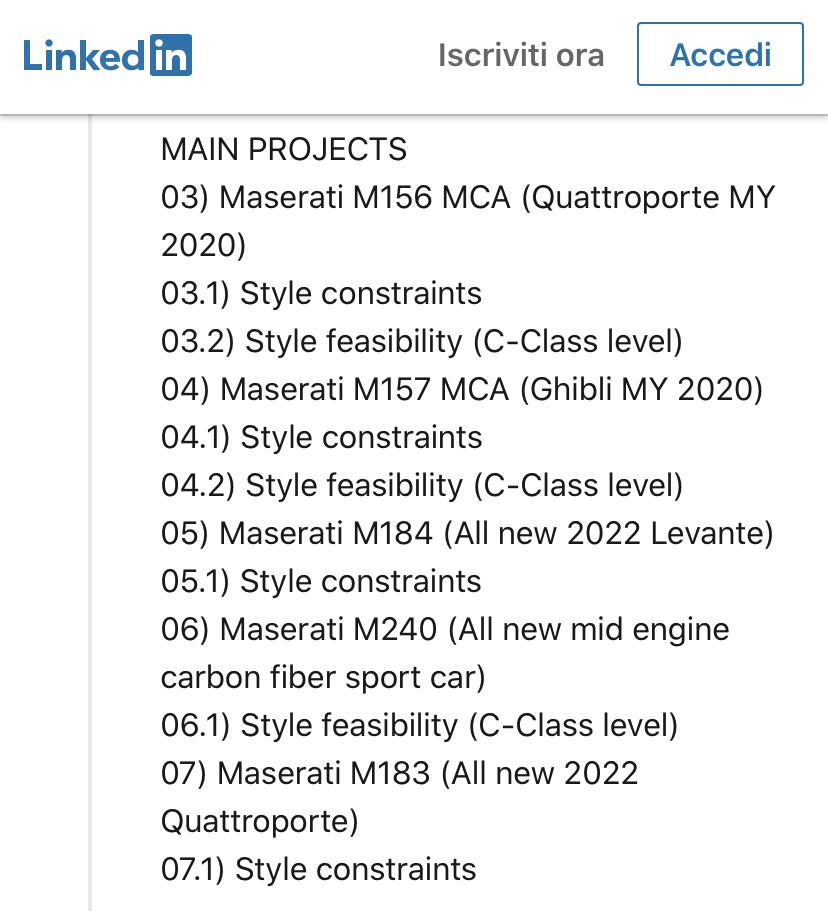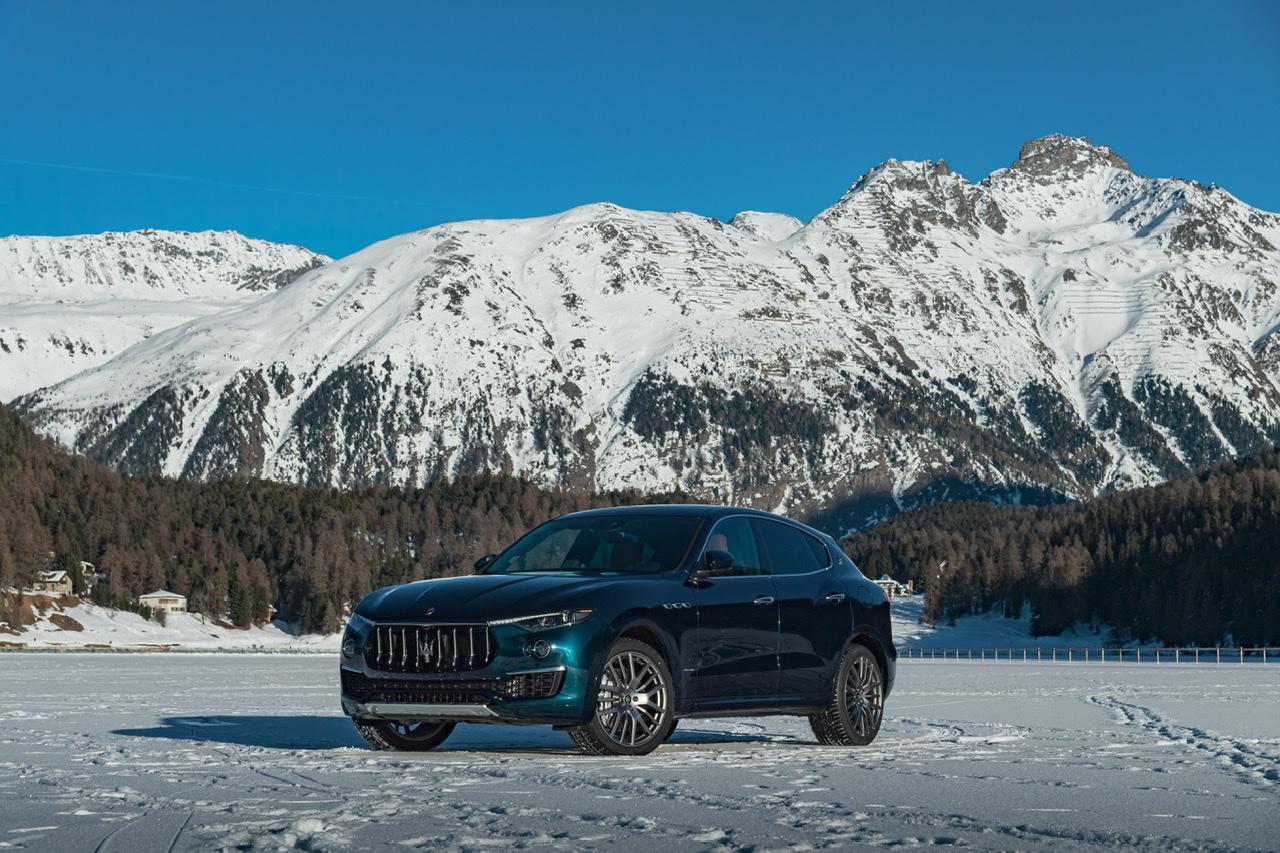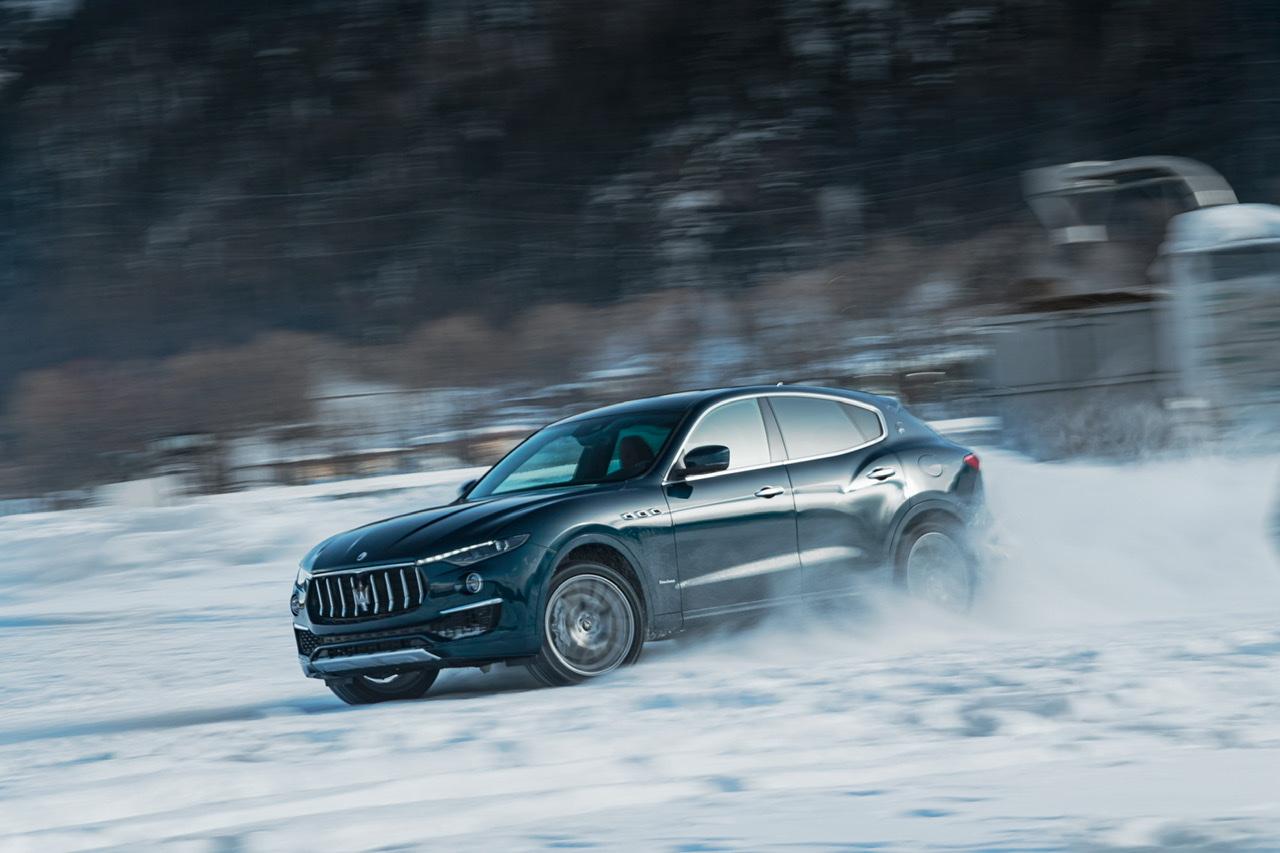-
Numero contenuti pubblicati
26164 -
Iscritto il
-
Ultima visita
-
Giorni Massima Popolarità
111
Tipo di contenuto
Forum
Galleria
Calendario
Download
Articoli del sito
Store
Blog
Tutti i contenuti di __P
-
From the successor to the 550 for the 1970s to a draft that actually looks quite different? Quite different! This is already apparent in the second draft, which I find sensational. This one looks almost American-inspired. The fourth model isn’t really modern at all, and then we come to this one (note: the Model 5, Klie). The back in particular is very modern for that time and the point in the sequence. It looks clean, neat. That fits the bill. That’s why I’m surprised that the May 1966 draft (note: the Model 2) was also created by F. A. Porsche, because it doesn’t really fit with his design philosophy. If we look at the first model from 1964 and compare it with the development two years later, it doesn’t have the characteristics or appeal of the basic 550 concept at all. The result is comparable with the development from the 356 to the 911. That was an incredibly courageous step back then – the new model had that modern factor. The 914 Model 3 is just starting to get precisely that modern factor. Even if you look at these front lines, these clear surfaces. Good proportions. The July 1966 draft is quite different, and more suitable for the Model 2. Two competing drafts which were then discussed. At that time, in my opinion, they made absolutely the right decision and went for the much more modern design. The first drafts are clearly different, then one builds on the other, and the others are created by two different designers at the same time. Designers who ultimately end up working on the same project talk to one another. To compare it with what we’re doing today, this phase is similar to the development of the Panamera. At that time, we knew what we wanted, the concept was there, and we basically came up with two variants. One like this, the other like that. And as you can see from the 914 models, people work side by side. They inspire one another, they influence one another in their work. You end up looking across the room, and thinking yeah, I like that. And you incorporate it. Admiration and distance: Mauer makes no secret of the fact that, from a designer’s point of view, the 914 is not one of his favourites. And yet he admires its purist approach. The 914 of 1969 is a real mid-engined Porsche. Even though it looks very different to the 911. Are elements such as the Targa bar a way of formally demonstrating a common family bond? A mid-engined sports car is indeed a typically Porsche thing. At the time of the Auto Union, the competition still began with a front-mounted engine, and Porsche developed the first mid-engined racing cars. The 356 “No.1” Roadster is a mid-engined car, too. This had to be changed in favour of mass production capability. Given this background, Ferry Porsche’s idea is understandable – okay, let’s make another of those robust entry-level models. The mid-engine is the right concept for things like that. The Targa was created as a solution for the safety issues and the new regulations from the US. Actually, a minimal roof is really all you can have with an open, reduced, minimalist concept familiar from the 550, or perhaps the Speedster as well. But if the new legislation no longer allowed this, the way forward was clear for the 914. We ourselves had already come up with a good solution for combining top-down driving and safety – the Targa bar. After all, the concept was to combine the idea of “top-down” and “safety”, and now we had to make it modern! The final design is characteristic of the styling philosophy under the direction of Ferdinand Alexander Porsche. This common ground almost automatically led to the creation of a brand identity. Although that certainly wasn’t the actual intention. Does the concept set the course for the design? That’s how I see Porsche to this very day. First, we ask ourselves – what would be the best concept? Entry-level, reduced, sporty. When it comes down to it, what do I really need if I’m going to have fun driving? A mid-engined car, obviously. And then transferring the formal characteristics is a logical next step. To create a car with particularly attractive proportions on account of the engine position. The 914 has typical mid-engine proportions, that has to be said. I don’t know whether there was anything comparable, especially not in those days. Typ 914 The first model of the Type 914 was designed by Heinrich Klie, 1964. The second model of the Type 914 was designed by F. A. Porsche in 1966. The third model of the Type 914 was desgined by F. A. Porsche in 1967. Brief designations masking a long period of development. The Epple design points the way to the March 1967 model, which already bears many of the features of the final 914. Klie’s draft is already clearly recognisable as a 914. Should it be easier for people to place their elbow on the lowered doors? Just a few months after Klies’ groundbreaking design, the shape of the Porsche 914 was clear. A functional, smooth-surfaced car with space for two and their luggage – and with a Targa roof, just for fun. The little clay model was turned into a life-size design. Slowly the team made their minds up: they were heading in the right direction, the mid-engined car project just went on improving. A question about the schedule: the first model dates back to 1964, but the 914 wasn’t available on the market until 1969. Is that fast? What’s the situation today? With the new 911, which we presented at the end of 2018, it took about four years from the very first sketch to market launch. In this case (note: the Type 992) this is a further development, not a completely new development. But the 914 was. It started in around 1964 and market launch was in 1969, so five years. That’s pretty impressive! Things went incredibly quickly, especially between 1967 and 1969. That’s really shifting some. Details such as the front, especially the headlights, were the subject of long discussions. Twin headlights or single headlights, that was the question. The version with the pop-up twin headlights was formally the more coherent. Especially if we remember what things were like in those days. Such concepts in 1965, 1967 – crazy. From my point of view, the question of philosophy is an interesting one. The 911 had the single round headlights, but the cheaper car was supposed to have twin headlights? That wasn’t logical. But the drafts were already state-of-the-art. After testing a series of design variants, the 914 turned up with lifted wings and striking indicators. That fitted in with Porsche’s guiding edge philosophy. This describes the orientation available to the driver thanks to the wings in the outer area, where the car is straight. At Porsche, this theme comes from the 911. If you’re on a mountain pass in a 911, it’s a real help. In lots of other sports cars, all you can see is the window, not where your car ends. These distinctive wings provide orientation when you’re sitting in the car. This is implemented in the 914, too. I don’t know whether the issue of brand identity, what we now call “movement over the bonnet”, was already playing a role at this point. Probably not. Conversely, a few years ago the Panamera wasn’t about forming a guiding edge, but about transferring the brand identity. In this case, the one that has established itself over the 911, on a vehicle designed for a completely different segment. As difficult as this is when the engine is at the front, it was clearly a stylistic element with the aim of transferring the brand identity. The shapes of the side line and rear were finalised more quickly than the front. There was a great deal of discussion on the arrangement of the headlights. But the concept of individual pop-up headlights with spotlights in the bumper ultimately prevailed. The 914 has an astonishingly good cd value of 0.37. Even with the headlights popped up, and with no complex computer simulations. Does today’s technology limit human design influence? Despite all the simulation and modern technologies, I believe our creativity isn’t limited. Just like things were in the 1960s. The lads in those days did of course have a basic understanding of things like what works well aerodynamically and what doesn’t. Today, we know that having indentations in front of the wheels and strong indentations at the back is the worst thing when it comes to the aerodynamics. If you look at the brutally straight layout of the 914, it’s the answer to the search for an extremely modern shape. In that case, it’s likely that the aerodynamics worked quite wonderfully from the aspiration to make a very modern car. Surely the result was no coincidence – there were enough people at the company who knew right from the outset exactly what works and what doesn’t. And without today’s simulation methods, too. In the old days, engineers were designers as well. How many technicians does a designer have to be today? You have to have a basic understanding. If you want to achieve certain things, you can’t do that without a basic knowledge of what you’re doing. Because without that, we wouldn’t be able to argue against the classic technicians if there was any doubt. What are your own personal thoughts on the shape of the 914? I still find the car whimsical, but the picture changes as you look at it more closely. I haven’t really been intensively involved with the 914 to date. From what we’ve been saying over the past hour and the fact that I was aware when it came into being, I’ve come back to the point where I think the car was modern. It’s impressive to see how the car stands out in its era. It wasn’t even on my radar before. The car has almost no layout, this middle bit is extremely consistent. To have the courage to design something like this, so big but without a swage line, without fashioning everything – that’s really fantastic. I think the tail is really good. The process up to that point is fascinating from today’s point of view, too. I must confess, I’m still a bit reluctant when it comes to this car, but for me the performance of the time outweighs everything. Coming up with something like that. And there’s the detailed solutions, too: the wide headlights are superb. Or the door handles, minimalistically integrated. Completely new for Porsche. I find it fascinating how F. A. and his team managed to bring in this modern, reduced style, in a similar way to the transition from the 356 to the 911. The more I work with the 914 – that’s exactly what I’m fighting for now. This reduced, puristic approach. Integrating things, not one line too many. Typically Porsche: Michael Mauer remembers the 356 “No. 1” Roadster, which founded the Porsche brand with its mid-engine. The 914 took up this philosophy again. Is there a future for the 914? Or does it at least provide inspiration? We have this discussion all the time. It’s all about the entry-level Porsche. I think it’s very interesting, but opinions differ on the characteristics of a vehicle like that. Porsche is probably the only brand that could allow this in an unusual way. An entry-level Porsche not in terms of the price, but the sense of reduction. A car with almost no electrics, everything mechanical, puristic. I find the idea exciting. The other one is a car for a target group of people who drive Audi TT RSs or Golf R32s. A Porsche that stands out offering what would have to express exactly that, in formal terms – a very simple, unpretentious car. A modern 550 in the broadest sense. Limits in terms of dimensions are reached quickly, simply because of driving safety. This automatically requires cars to be a certain size. Sales might see things differently anyway. From this standpoint, a much cheaper entry-level Porsche would be the right thing to do – but that’s not my approach. Puristic, reduced, “back to our roots”. I think the time has come. That would be typically Porsche again. via Porsche Ammetto di avere sempre avuto un debole per questo sgorbietto ?.
-
- 2
-

-
- porsche design story
- porsche 914
-
(e 3 altri in più)
Taggato come:
-
Dovrebbe esserci il Maserati Innovation Lab nell’ex R&D AR/Maserati. Ad ogni modo... LinkedIn sempre fonte di conferme/novità ?
- 4297 risposte
-
- 1
-

-
- quattroporte m183
- maserati newgt
-
(e 35 altri in più)
Taggato come:
- quattroporte m183
- maserati newgt
- m240
- maserati 100% electric
- m6u
- m157
- m9s
- maserati f-uv
- m184
- mmxxi
- maserati bev
- maserati elettrica
- m156
- nuove maserati
- levante mca
- m183
- m189
- maserati supercar
- quattroporte mca
- maserati
- maserati full electric
- maserati ev
- m161
- levante m184
- future maserati
- maserati grecale
- grecale
- maserati d-uv
- folgore
- nuovi modelli
- maserati spy
- maserati mc20
- new v6
- 2.0 phev
- ghibli mca
- 2.0 mhev
- mmxx
-
Allora un paio di considerazioni... D-UV confermata per Cassino nel 2021 MCA di Giulia e Stelvio confermati nel 2021. Come sia possibile costruire un solo modello su una base condivisa con altri modelli Maserati (future QP e Levante) nell’altra parte del mondo per poi riportarla qui è industrialmente molto curioso... ? E con un restyling pesante delle AR previsto il prossimo anno, credo si possa prendere una produzione di o al ‘24/25.
- 683 risposte
-
- 4
-

-
- gims 2020
- 24 giugno 2020
- (e 9 altri in più)
-
No. ?
- 492 risposte
-
- 1
-

-
- ghibli trofeo
- nuove maserati
- (e 6 altri in più)
-
- 26 risposte
-
- 1
-

-
- quattroporte royale
- royale
- (e 12 altri in più)
-
Si sì... ma credo che i “concept” presentati fossero più una sorta di vetrina che effettivi ordini dei clienti. Creando uno spazio a Modena per l’atelier vanno ad ufficializzare la cosa.
- 4297 risposte
-
- quattroporte m183
- maserati newgt
-
(e 35 altri in più)
Taggato come:
- quattroporte m183
- maserati newgt
- m240
- maserati 100% electric
- m6u
- m157
- m9s
- maserati f-uv
- m184
- mmxxi
- maserati bev
- maserati elettrica
- m156
- nuove maserati
- levante mca
- m183
- m189
- maserati supercar
- quattroporte mca
- maserati
- maserati full electric
- maserati ev
- m161
- levante m184
- future maserati
- maserati grecale
- grecale
- maserati d-uv
- folgore
- nuovi modelli
- maserati spy
- maserati mc20
- new v6
- 2.0 phev
- ghibli mca
- 2.0 mhev
- mmxx
-
Personalizzazioni che erano già possibili su QP precedente e sulle GT appena appena uscite di scena. Forse hanno puntato alla collaborazione con Zegna per creare una sorta di programma Designo/Individual, ma per Maserati non era sufficiente. Per fortuna se ne sono accorti!!!
- 4297 risposte
-
- 2
-

-
- quattroporte m183
- maserati newgt
-
(e 35 altri in più)
Taggato come:
- quattroporte m183
- maserati newgt
- m240
- maserati 100% electric
- m6u
- m157
- m9s
- maserati f-uv
- m184
- mmxxi
- maserati bev
- maserati elettrica
- m156
- nuove maserati
- levante mca
- m183
- m189
- maserati supercar
- quattroporte mca
- maserati
- maserati full electric
- maserati ev
- m161
- levante m184
- future maserati
- maserati grecale
- grecale
- maserati d-uv
- folgore
- nuovi modelli
- maserati spy
- maserati mc20
- new v6
- 2.0 phev
- ghibli mca
- 2.0 mhev
- mmxx
-
Da LinkedIn saltano fuori i codici progetto di new Quattroporte e new Levante, M183 per la prima e M184 per la seconda!
- 4297 risposte
-
- 5
-

-

-
- quattroporte m183
- maserati newgt
-
(e 35 altri in più)
Taggato come:
- quattroporte m183
- maserati newgt
- m240
- maserati 100% electric
- m6u
- m157
- m9s
- maserati f-uv
- m184
- mmxxi
- maserati bev
- maserati elettrica
- m156
- nuove maserati
- levante mca
- m183
- m189
- maserati supercar
- quattroporte mca
- maserati
- maserati full electric
- maserati ev
- m161
- levante m184
- future maserati
- maserati grecale
- grecale
- maserati d-uv
- folgore
- nuovi modelli
- maserati spy
- maserati mc20
- new v6
- 2.0 phev
- ghibli mca
- 2.0 mhev
- mmxx
-
A me risulta che lo stand Maserati sarà comunque a Ginevra, anche se senza novità di prodotto “da produzione” da presentare... ? Ipotesi tua o a te hanno detto di aver cassato le V8?
- 492 risposte
-
- 1
-
![TESLA Hug [Trolling Mode]](https://www.autopareri.com/uploads/reactions/teslacare.png.6593869a254d560c62f48aa712e2b7bb.png)
-
- ghibli trofeo
- nuove maserati
- (e 6 altri in più)
-
da dove arriva tale certezza?
- 492 risposte
-
- ghibli trofeo
- nuove maserati
- (e 6 altri in più)
-
E Grugliasco che assembliamo?
- 683 risposte
-
- gims 2020
- 24 giugno 2020
- (e 9 altri in più)
-
Beh quando per 3 anni blocchi tutto, ovvio che ci siano “intasamenti”!
- 492 risposte
-
- 9
-

-
- ghibli trofeo
- nuove maserati
- (e 6 altri in più)
-
Questione di mesi... ? E comunque sempre di Giorgio si tratta, seppur evoluto.
- 683 risposte
-
- 1
-

-
- gims 2020
- 24 giugno 2020
- (e 9 altri in più)
-
Attenzione che le modifiche a Giorgio che andranno su Levantina, dovrebbero essere poi condovise dagli MCA di Giulia e Stelvio (che saranno belli pesanti).
- 683 risposte
-
- gims 2020
- 24 giugno 2020
- (e 9 altri in più)
-
Beh ovviamente il ridimensionamento del piano AR si fa sentire su Cassino. Ma quindi confermi che Giulietta ha solo qualche mese di vita? Arriva all’estate?
- 683 risposte
-
- gims 2020
- 24 giugno 2020
- (e 9 altri in più)
-

Alfa Romeo Tonale PHEV 2022 - Prj. 965 (Spy a pag.351)
__P ha risposto a nella discussione in Scoops and Rumors
Diciamo che Gorlier (e la rete) era speranzoso di averla pronta entro il 2020... ? -
Renegade è precedente a Ralph Gilles... ? Impressione mia, ma tutto quello che è uscito sotto la sua supervisione, non molto a dire il vero, sa di anni ‘90! Per carità c’è un ritorno ai nineties in molti settori (moda in primis, vedi successo di Virgil Abloh), però imho c’è modo e modo di farlo! Poi diciamo che il fatto che in America siano fatte per costare “poco” non aiuta al design complessivo (vedi grafiche dei fari di Compass ad esempio).
-
un paio di considerazioni... A Cassino nel 2021 arriverà la D-UV Maserati in linea, di cui si possono prevedere almeno 20k auto anno. Si spera che gli MCA di Giulia e Stelvio possano ridar fiato alle vendite. Sulla possibilità che possano essere montati altri modelli in futuro, speriamo che Tavares scongeli E-SUV e GTV. A Modena c’è cassa al 100% perché stanno ristrutturando lo stabilimento, dove da maggio inizierà la produzione di M240 nelle varianti coupé, cabrio, PHEV e BEV. Sempre a Modena ci sarà una nuova verniciatura, con possibilità di verniciature personalizzate, e l’allestimento dei programmi di personalizzazione delle vetture di prossima generazione.
- 683 risposte
-
- 1
-

-
- gims 2020
- 24 giugno 2020
- (e 9 altri in più)
-

Alfa Romeo Tonale PHEV 2022 - Prj. 965 (Spy a pag.351)
__P ha risposto a nella discussione in Scoops and Rumors
No... il 1.5 è un 4 cilindri della famiglia GSE/FireFly. -
Cosa ti rende scettico???
- 38 risposte
-
- land rover spy
- range rover sport
- (e 6 altri in più)
-
Chissà perché i teutonici hanno questo grande amore per i toni del grigio... ?
- 1197 risposte
-
- volkswagen
- volkswagen ufficiale
- (e 6 altri in più)
-

Alfa Romeo Tonale PHEV 2022 - Prj. 965 (Spy a pag.351)
__P ha risposto a nella discussione in Scoops and Rumors
Il 1.5 credo che altro non sarà che il 1.3 con cilindrata maggiorata, magari con qualche feature in più. Se il modulo ibrido è il medesimo di R/C, quindi un motore elettrico sull’asse posteriore, non vi è nessuna difficoltà tecnica nell’implementazione. -

Alfa Romeo Tonale PHEV 2022 - Prj. 965 (Spy a pag.351)
__P ha risposto a nella discussione in Scoops and Rumors
Se le indiscrezioni di @GinaCostanza76 dovessero rivelarsi corrette, neanche il 1.6 mjt. Interessante capire se il 1.5 sarà l’unico FireFly disponibile o se verrà affiancato in basso dal 1.3. -
Io ho trovato interessante Britannia. Adesso sto seguendo His Dark Materials, mentre mi incuriosisce Emergence ma che al momento non riesco ad incrociare su Fox.
-
Stando a quanto scritto nelle press release e a qualche rumors direi proprio di sì. M240 immagino voglia essere la massima espressione di sportività del brand, dove, come per Ferrari l’apporto del sistema ibrido serve ad aumentare la potenza ed abbassare le emissioni in fase omologativa. Concetto diverso invece per una GT 4 posti BEV.
- 110 risposte
-
- 1
-

-
- prossimi modelli maserati
- maserati
- (e 4 altri in più)







